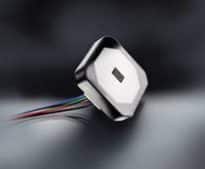Santa Rosa, California, November 30th, 2023 – SCHURTER series DG11 and DG12 with and without main filters feature a first-of-its-kind ingress protection solution for IEC inlets, consisting of a seal gasket between the connector and mating V-Lock power cord. The blue colored latch of the V-Lock power cord and blue inlay of the appliance inlet indicate that the two have been … [Read more...]
Military
Schurter Sets New Benchmark in Reducing CO2 Footprint with New Green Line
Santa Rosa, California, July 27th, 2023 – SCHURTER further embarks on its sustainability initiatives by introducing its new Green Line collection of high-quality components. As part of SCHURTER’s sustainable strategy, these IEC 60320-1 appliance connectors are the industry’s first to contribute to less CO2 emissions and lower material consumption. They are also first in the … [Read more...]
Fundamental Oscilloscope Probes
As electronics have become more advanced, so has the equipment used to measure their signal behavior and system performance. In the realm of EMC compliance, oscilloscopes are one of the important tools used to measure signals, hunt down noise sources, and identify time-domain measurements that may contribute to radiated or conducted emissions. Without a properly selected probe, … [Read more...]
The Voltage Rises
Santa Rosa, California, July 24th, 2023 – In the past, automobiles had minimal electrical systems and relied mainly on mechanical systems. Today, there are many electrical functions such as seat heating and cooling, comfort systems, and assistance systems that draw a lot of electricity from the battery. In a 12V vehicle electrical system, higher and higher currents must flow. … [Read more...]
Radiated Emissions Testing
INTRODUCTION Radiated emissions testing is only one part of emissions testing. CISPR 32, the document that lays out limits and methods of measurement for emissions (radiated and conducted) for Information Technology Equipment (ITE), broadcast receivers and multimedia equipment is 120 pages in length. ANSI C63.4 deals with only the testing part (limits are contained in a … [Read more...]
New Touchless Hidden Switch is Concealed Behind Surface
Santa Rosa, California, August 10th, 2023 – SCHURTER introduces the innovative THS switch series with optical sensor technology that can be concealed behind any surface without the need for mounting holes. A small opening in the user interface is all that is needed to allow the ToF sensor to actuate. Equipment and appliances used in public areas has created demand for … [Read more...]
New FXP Fuseholder with Increased Power Ratings Already Fulfills Upcoming IEC Standard
Santa Rosa, California, June 8th, 2023 – SCHURTER, a leading provider of electronic components, is proud to announce its new FXP fuseholder with increased power ratings. The closed fuseholder provides a solution to a longstanding industry challenge that involves power dissipation limitations for fuseholders used at higher operating currents and temperatures. SCHURTER’s new FXP … [Read more...]
Summary of Military and Aerospace EMC Tests
INTRODUCTION Military and aerospace EMC tests cover a wide range of products. While the standards, including limits and test methods may differ, all EMC test standards have a few things in common. The most basic are the limits for emissions and the types and levels of susceptibility testing. Emissions tests (and their associated limits) are put in place for military and … [Read more...]
Protecting RF, Receiver, Analog and Control Line Input Circuits Against The RTCA DO-160 Pin Injection Lightning Test
ABSTRACT Circuits are described that effectively protect RF, receiver, analog, and control line input circuits from three types of transient injection, described in DO-160, directly into the input pin of the connector. The goal was to achieve a circuit which would not adversely affect the performance of the RF circuit over an input frequency range of 20MHz to above 1GHz … [Read more...]
The Vital Role Of Simulation For Virtual EMI And EMC Test Environments
Before deploying microwave and millimeter-wave devices and systems within 5G, the Internet of Things (IoT), and high-speed wireless communication, it is essential to predict their performance. This need has increased the demand for virtual test platforms through simulation software. High carrier and system bus frequencies are necessary for high-data-rate communication … [Read more...]
- « Previous Page
- 1
- 2
- 3
- 4
- 5
- …
- 83
- Next Page »














